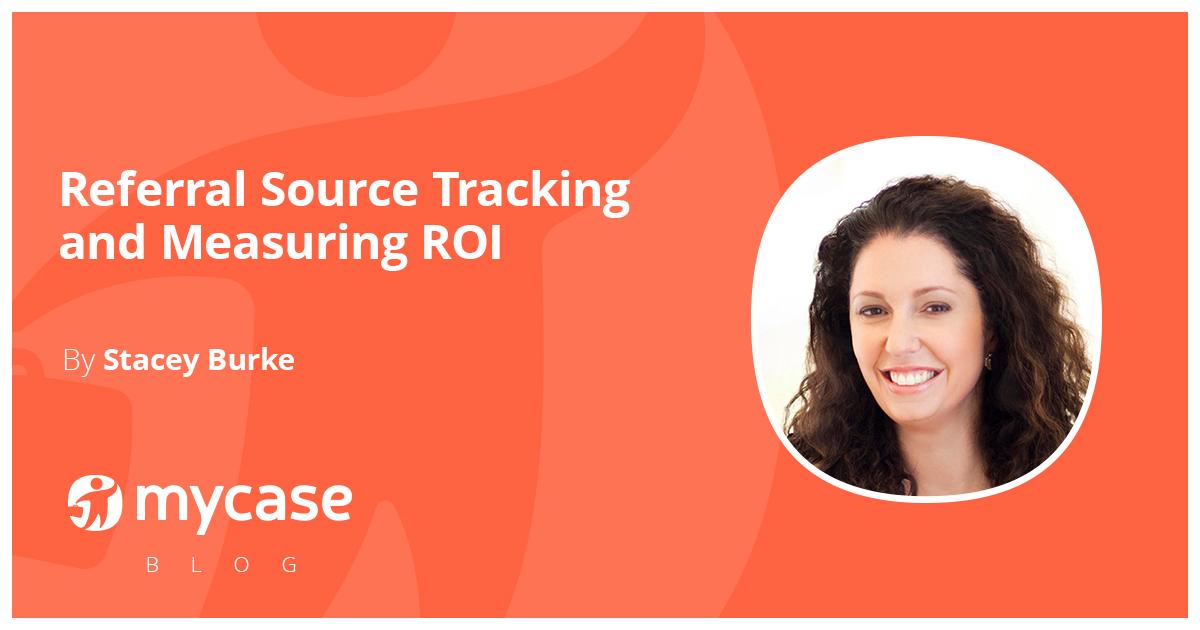This post is the third in a three-part series on new case intake and lead management. Refer back to my first two posts in this series, Part One: Efficient Capture of Lead Information and Part Two: Lead Nurturing and Conversion Rates. The mantra of all three posts is that if your law firm is going to spend time and money on marketing, you cannot underestimate the value of a strong client intake process.
Grow your law firm’s caseload without overspending on marketing.
Referral Attorneys and Referral Sources
When most lawyers or law firm employees hear the word “referrals,” they think of a lead or case sent over by a referral lawyer. These referrals are highly coveted because they come with the implied endorsement of the referrer, making the client more likely to hire you because someone they already trust referred them to you.
Receiving referrals is an important part of building a successful law firm. Some firms receive so much referral work they don’t really need to pay for traditional marketing. By tracking your referrals in a database, you can quickly and easily identify which lawyers are sending you business, how good the cases are, and how much money you project the firm will make off of these matters. With that knowledge at hand, you can make informed decisions about maintaining, cultivating, and improving your relationships with each referral lawyer. And, the more organized and streamlined your intake and case management is, the easier it will be for you to keep your referral lawyers happy with case status updates and reports.
But in a broader sense, referral lawyers are only one type of law firm referral source. Other sources of new business can include everything from earned media coverage to a Google AdWords campaign. Tracking which referral source generated which leads (and ultimately cases) is one of the most important tasks a law firm undertakes as part of its intake process. So, why is it important to track where leads come from?
With so much data available to both marketing vendors and law firm leaders today, it is crucial to know the difference between acquisition channels and how they impact factors like brand exposure, engagement, conversion, and, ultimately, return on investment (ROI). When you apply the referral data correctly, you will be able to adjust your law firm’s marketing strategies to embrace the strengths of each source of business with greater efficiency.
Referral Source Tracking Best Practices
In an ideal world, every lead would soar into your law firm with all of the information you need riding in with it, including the lead’s contact information, case screening details, and how they found your law firm. In reality, that rarely if ever happens, so we have to create our own internal systems to gather, capture, input, and analyze that data. Do not rely on the caller for information about how they found your law firm. Humans are unreliable at best, and most won’t even know. You can always rely on data, so set yourself up for success with solid lead tracking before spending major marketing dollars.
I Track, You Track, We Track
While leads can arrive at your firm in many different ways, the two most common methods are phone calls and form submissions.
Phone Calls: Your law firm should use online call tracking and recording as much as possible. That way, every call that rings anywhere is captured in their software by categories you set up. For example, if I run Facebook ads to acquire clients for Puerto Rico property damage insurance claims, I would use a call tracking number in my ads and on the landing page to which I drive my ad traffic. In the call tracking software, you can filter your calls by number, therefore enabling you to see in real time what calls have come in via these ads. Along with website (and other digital) analytics, call analytics can prove which campaigns perform best and how your intake department is handling the incoming calls. My preferred vendor for Call Tracking is CallRail, because in addition to being affordable, easy-to-use, and cloud-based, the service seamlessly integrates with Wordpress websites and several other major players like SalesForce, HubSpot, and Google AdWords.
Form Submissions: Even though more and more Internet users and consumers of professional services are turning to mobile devices for their research, form submissions should still remain a significant conversion mechanism for every law firm. For purposes of this post, let’s assume the form submissions are from your legal website, which has Google Analytics installed. The most precise method of tracking the source of these leads will be to set up both Events and Goals in your website’s Google Analytics. You will want to set up a Goal for each form you have on your website and then you can create a report to show you how many completed goals were associated with each campaign. You can also add UTM Form scripts directly to your website or in Google Tag Manager and the information will come across with the lead on the form submission.
Calculating ROI
If you spend money on marketing, you should want to know what each dollar you spend does to benefit your business. With that in mind, we turn to measuring return on investment. On a basic level, we calculate our return on investment via a pretty simple equation: ROI = [Revenue earned] – [Cost of investment]. It’s critical to properly account for all of your law firm marketing expenses when determining ROI, which is why measuring on a per-project or per-campaign basis is preferred.
An example could involve running local radio ads to acquire clients for transactional business matters. If your law firm invests $5,000 in the radio campaign and the project generates 10 leads, your acquisition cost per lead is $500 (note: this does not include internal costs such as staff time and software licenses). If the revenue your firm will generate off of each lead exceeds $500, then your business should turn a profit, thus yielding a positive ROI.
Grow your law firm’s caseload without overspending on marketing.
About the author

Stacey BurkeAttorney & Legal SME
Stacey Burke is an attorney who provides consulting services to law firms across the country. She has worked with over 150 law firms in a wide range of practice areas in many different states on projects ranging from social media marketing to brochure design. If you have a question about law firm marketing, Stacey knows the answer. In addition to her legal industry accolades, her company won the American Marketing Association Crystal Award for Online Marketing in Google Analytics for 2018. She lives in Houston with her husband, two daughters, and two French bulldogs and eats a lot of popcorn.
